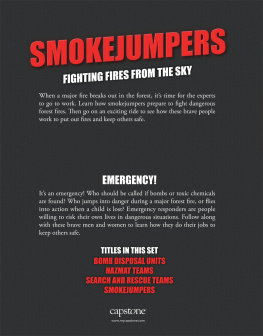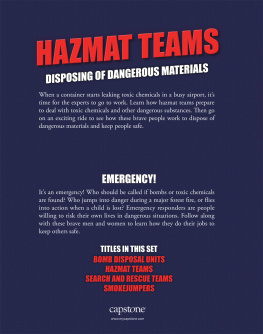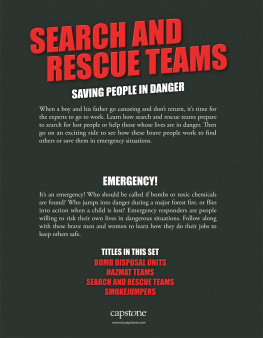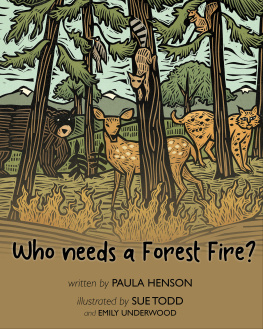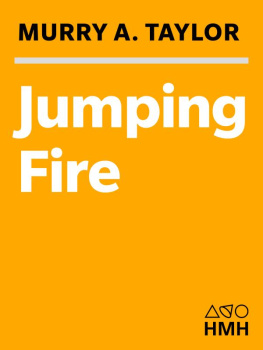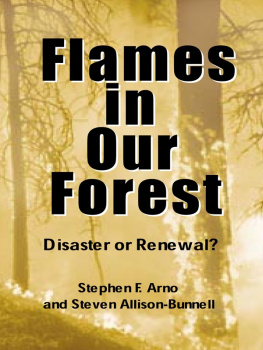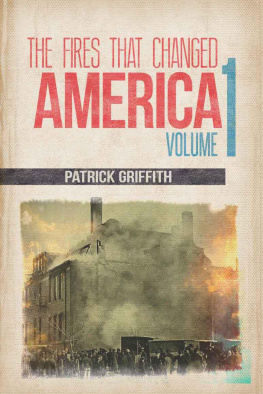JUMPING INTO THE FIRE
Summer lightning strikes a tree in Fairbanks, Alaska. Smoke rolls across the sky as the tree begins to burn. The blaze could eat up 5,000 acres (2,023 hectares) of national forest in minutes if it is not contained. The local fire chief is concerned because his staff cannot contain the wildfire alone. The crew is too far away, and local firefighters do not carry the tools to contain a fire of this size. The fire chief has to call in the smokejumpers.
The best way for smokejumpers to get near the blaze is to use an crews.
Since wildfires are common in the western United States, smokejumping has become a growing career. More than 300 smokejumpers work each year in the United States. The summer months are an extremely busy time for smokejumpers. On average, they make more than 1,200 jumps per year.
Smokejumpers jump from aircraft as close to a wildfire as possible.
Chapter 1
BECOMING A SMOKEJUMPER
Its difficult to get hired as a smokejumper. Hiring organizations, called jump bases, require candidates to have basic firefighting skills and 12 months of experience in the field. People interested in becoming smokejumpers gain experience by training with units called hotshot crews or with local fire agencies. College education in forestry or agriculture is also helpful.
PHYSICAL FITNESS
Physical fitness is an important part of being a smokejumper. The training program begins with a fitness test called the physical training (PT) test. It takes place on the first day of training. Candidates are tested in several activities. They begin by running 1.5 miles (2.4 kilometers) in 11 minutes. Then they must do seven pull-ups, 45 sit-ups, and 25 push-ups. If a candidate cannot complete these tasks, then he or she will not be accepted into training.
Smokejumper rookies go through strenuous training to prepare them for firefighting.
FACT:
tactics.
TRAINING
The training program to become a smokejumper lasts six weeks. It is designed for rookies to learn the basics of parachute jumping and handling tools on the ground. Training to become a smokejumper takes hard work. Trainees wake up at 5:00 a.m. and line up in formation to head out for a morning run. This warm-up run is just the beginning of a 12-hour day.
During an average day of training, rookie smokejumpers receive both physical and academic training. After their warm-up, they continue with more physical exercises. Then they enter the classroom to learn the basics of smokejumping. This includes skills such as parachuting and CPR. It also includes preparation and debriefing for field exercises.
Field exercises are a safe way to practice the skills learned in training.
FACT:
Smokejumpers must learn how to tuck and roll when landing after the impact of a parachute jump. Since these firefighters carry such heavy gear, this important skill is essential for their own safety.
The gear pack hike is the final training test. Candidates first strap on full gear packs weighing 115 pounds (52 kilograms). The packs include the tools and equipment needed to fight wildfires. Candidates must hike 3 miles (4.8 km) on level terrain in less than 90 minutes while carrying their packs.
In addition to field exercises, strengthening and cardiovascular exercises are a must to stay in good physical shape.
SKILLS AND FIELD EXERCISES
Smokejumpers learn many skills during equipment gets stuck in a tree after their jump.
TECHNICAL EXERCISES
Orienteering and fire science are useful technical skills learned during training. Orienteering is the use of compasses and landmarks to a region. The ability to locate and exit areas with wildfires could be the difference between life and death for a smokejumper. In addition, smokejumpers learn about how wildfires work on a scientific level. They use this information to help them stop fires from spreading.
Smokejumpers practice jumps in many different conditions and terrains.
The First Jump
A smokejumpers first jump is a team effort and an unforgettable experience, but many veteran smokejumpers say that the first jump isnt scary. Rookies are often more concerned with correctly performing their duties on the ground than with jumping out of a plane. Spotters provide rookie smokejumpers with radios on their first jump. They then talk the trainees down during their descent from the plane. Michael Blinn described his first jump as something hed remember forever: As I exited the door, I watched my feet rise toward the horizon and felt the snap of the parachute deploying. The sudden total silence and extreme clarity of the canopy against blue sky above me was an unparalleled experience. Ill never forget it.
FACT:
Only four smokejumpers have died during a parachute jump since 1940.
Chapter 2
PREPARATION AND EQUIPMENT
Smokejumpers rely on gear that can be dropped with them by airplane. The gear helps the fires and keeps them safe. Parachutes and protective clothes are their most important supplies.
Padded clothes protect smokejumpers during a parachute landing, including landing among trees and on the ground. The padded clothing also helps protect smokejumpers from the fire itself. Smokejumper suits are made of a protective material called Kevlar. Kevlar is thick, durable, and fire resistant. The suits are designed to protect smokejumpers from fire. One padded suit can weigh up to 75 pounds (34 kg).
Smokejumpers operate two types of parachutes, depending on the hiring organization. The Forest Service provides round parachutes, while the Bureau of Land Management uses ram air sports parachutes. Parachutes allow smokejumpers to reach the best strategic area to fight the fire.
Smokejumpers wear protective gear and carry firefighting tools.
TOOLS
Fireboxes are kits filled with tools and supplies for smokejumper crews. They typically last for three days, with enough supplies for two people. An airplane drops more supplies if they run out. The firebox contains everything necessary to fight fires, as well as food and water. Even chainsaws are packed safely in the firebox.
In addition to chainsaws, smokejumpers use a special ax called the in one head. It can be used to both dig soil and chop wood. The McLeod is another useful device in the field. It is a two-sided blade with a long handle like a rake. This tool is designed to rake firebreaks with one side and to cut trees with the other. Smokejumpers also use crosscut saws that are operated by two team members. Crosscut saws are less susceptible to damage than chainsaws when dropped from the plane.

